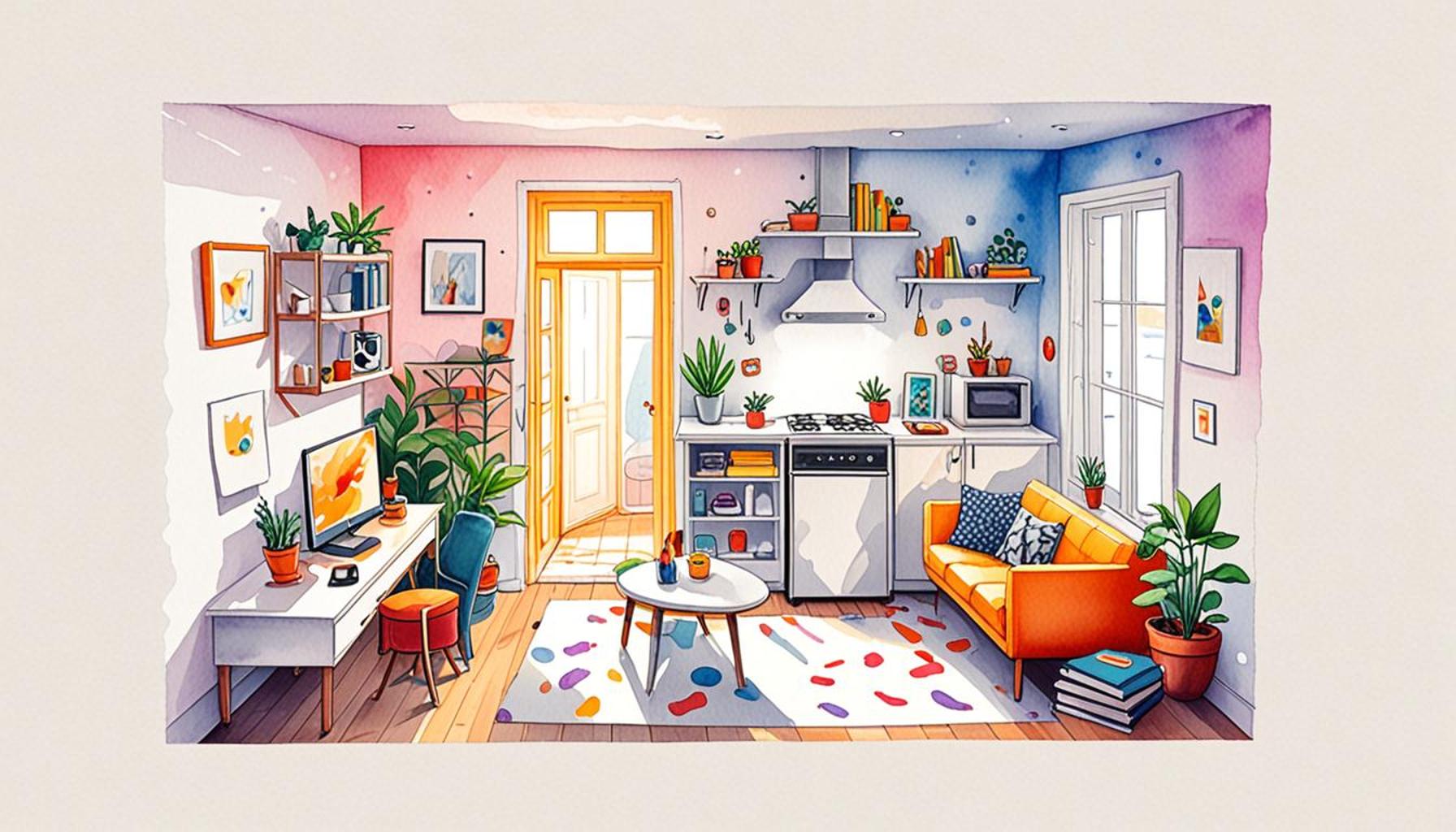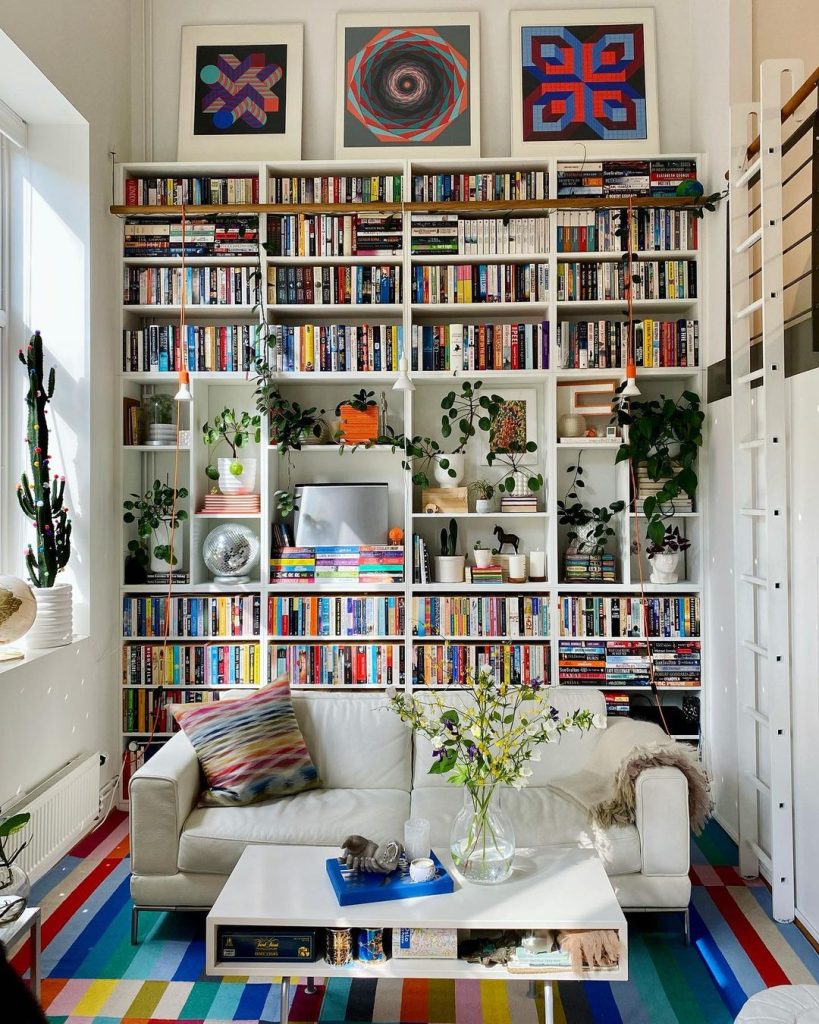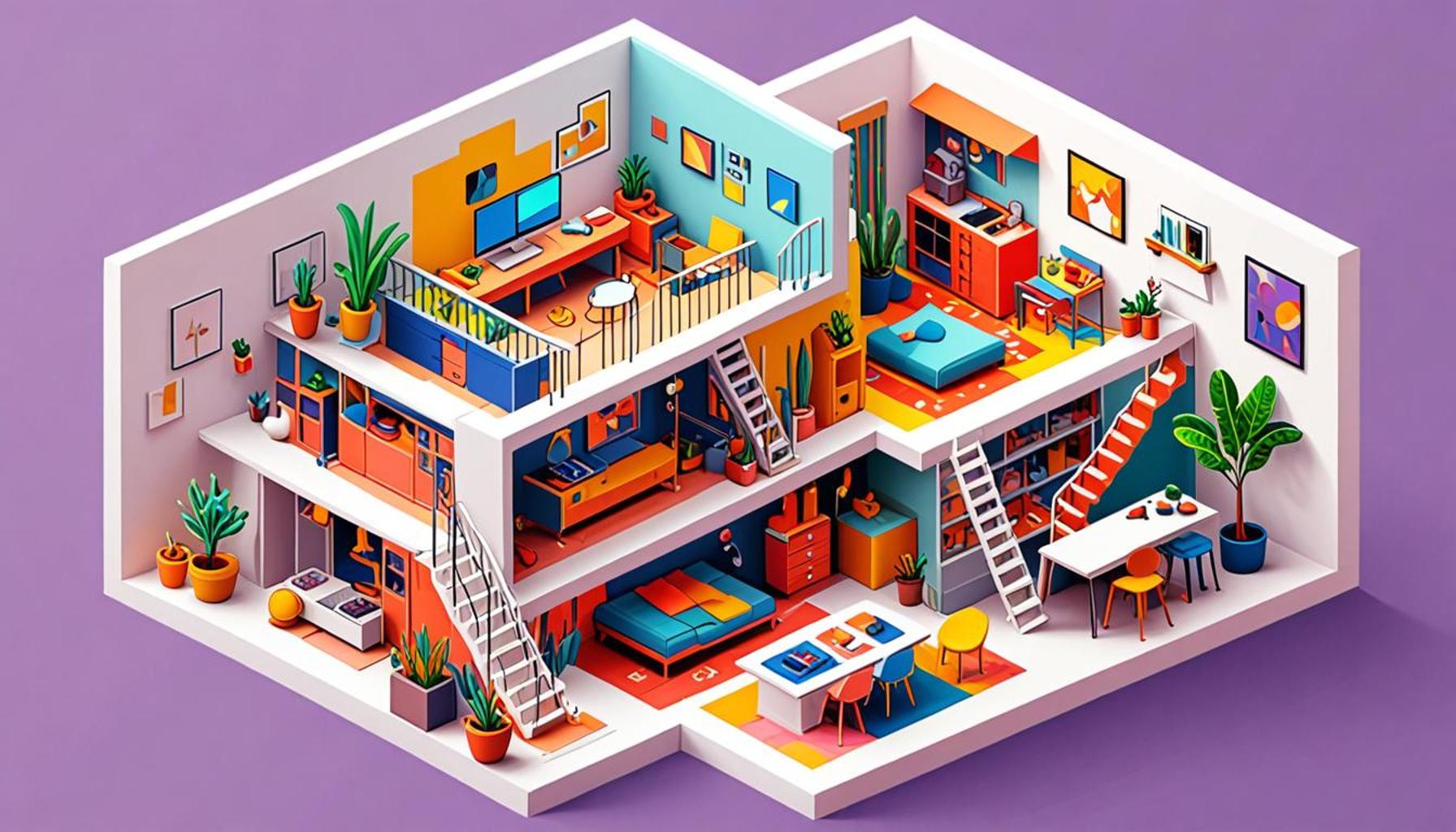Maximizing Small Spaces: Optimization Strategies for Minimalist Environments

Explore Innovative Ways to Enhance Small Living Areas
As urban living continues to rise in popularity, the art of maximizing small spaces has become an essential skill for modern residents. Many people find that limited square footage brings unique challenges that, when addressed, can lead to highly functional environments without sacrificing visual appeal. An aesthetic touch rooted in minimalism not only improves practicality but also cultivates a serene atmosphere. When thoughtfully designed, small spaces can serve as a delightful sanctuary amidst the chaos of urban life.
Why Focus on Small Spaces?
- Urbanization: According to the United Nations, over 55% of the world’s population now lives in cities, with figures expected to rise to 68% by 2050. As a result, the average living space continues to shrink, compelling residents to innovate and adapt.
- Climate Awareness: Smaller homes often come with smaller carbon footprints. Eco-conscious living can be achieved more easily in compact spaces, as energy use for heating, cooling, and lighting is significantly reduced.
- Cost-Effectiveness: A well-designed small space can minimize utility bills and furnishing costs. For instance, energy-efficient appliances used in smaller kitchens lead to lower monthly expenses, while multifunctional furniture reduces the need for various costly items.
Mastering the principles of space optimization can lead to dramatic transformations in your living experience. Practical solutions empower homeowners to utilize every inch of their space effectively, promoting an inviting aura even in the tightest quarters. Here are some practical strategies to kickstart your journey toward a more functional and minimalist environment:
Key Strategies to Maximize Space
- Multi-use Furniture: Invest in pieces that serve multiple functions, such as a sofa bed or an ottoman with hidden storage. For example, a Murphy bed can create an additional work area when not in use, making a small studio apartment feel expansive.
- Vertical Storage: Make good use of your walls by installing shelves or hanging organizers. Not only do they provide additional storage solutions, but they also free up valuable floor space, giving the illusion of a larger area. Bookshelves can also double as room dividers, defining spaces within an open floor layout.
- Declutter Regularly: Engage in a regular decluttering habit to keep everything organized. Maintaining only the essentials not only provides a clearer, more calming atmosphere but also makes it easier to navigate your living space.
By rethinking our approach to small spaces, we open ourselves to crafting environments that blend both practicality and enjoyment. Exploring these innovative strategies can elevate your minimalist lifestyle, ensuring that you create an inviting, clutter-free haven within the confines of a limited square footage. As you embark on this journey, stay curious and continue investigating new ways to enhance the comfort and functionality of your living area.
DISCOVER MORE: Click here to learn about digital minimalism
Smart Layout Design: The Foundation of Space Maximization
Designing for small spaces is a balancing act, weaving together functionality and aesthetics in a harmonious way. A well-thought-out layout forms the foundation of any minimalist sanctuary, guiding residents on how best to navigate their limited square footage. Understanding how to prioritize various zones in an open floor plan can lead to a more organized and efficient living environment.

Creating Zones in Open Floor Plans
For many urban dwellers, open floor plans are a common feature. While they offer a sense of spaciousness, they can also present challenges in defining different areas for work, relaxation, and dining. Clever zoning techniques can effectively create distinct spaces without the need for traditional walls. Below are some strategies to consider:
- Area Rugs: Using rugs to define spaces is an efficient way to create a visual boundary. A well-placed area rug can delineate a cozy living area from a dining space while adding warmth and texture to the overall atmosphere.
- Furniture Arrangement: Placing furniture strategically can help clarify spatial functions. For instance, angling a sofa can create the illusion of depth and lead the eye towards a designated area, making it clear that this spot is meant for relaxation or socializing.
- Lighting Variations: Layering light sources can also help define various zones. Consider using pendant lights above dining areas and softer table lamps in the seating area to create distinct environments within a cohesive design.
Beyond mere aesthetics, these zoning techniques can lead to enhanced productivity and comfort. Having clear distinctions between different areas aids in mental organization, allowing residents to shift their focus according to the space they are in, thus optimizing their overall experience in a small living area.
Emphasizing Vertical Space
In a world where horizontal space is often at a premium, vertical storage solutions offer a viable path to reclaiming lost square footage. Rather than solely focusing on ground-level options, think upwards. Vertical storage not only maximizes existing space but also adds dimension to your rooms.
Consider incorporating tall bookcases, wall-mounted racks, or even floating shelves that draw the eye upward, giving the illusion of higher ceilings while creating storage solutions. These elements can be particularly beneficial in smaller kitchens, where wall-mounted pots and pans can free cabinet space and keep cooking essentials within easy reach. Utilizing vertical space can markedly improve the efficiency of your home without sacrificing style.
By thoughtfully examining how to plan your layout and leverage vertical solutions, you position yourself to enhance the functionality of your small living environment. The journey towards a more organized and minimalist space is entirely achievable through these innovative design principles that make every square inch matter.
| Optimization Technique | Benefits |
|---|---|
| Vertical Storage Solutions | Utilizing wall space allows for maximizing floor area, creating an open and airy feel. |
| Multi-Functional Furniture | Furniture that serves multiple purposes, such as a sofa bed, reduces clutter while increasing utility. |
| Color Schemes and Lighting | Light colors and proper lighting create an illusion of space, making small areas feel larger and more inviting. |
| Decluttering Strategies | Regularly removing unnecessary items promotes a clean environment, enhancing tranquility and organization. |
Exploring optimization strategies for minimalist environments unlocks the potential of small spaces. Techniques such as incorporating vertical storage solutions maximize vertical space, while multi-functional furniture enhances utility without compromising style. Opting for lighter color schemes can create an illusion of spaciousness, and strategic lighting can amplify this effect, transforming small areas into cozy havens. Additionally, maintaining a consistent decluttering routine not only promotes aesthetic appeal but also fosters a more serene atmosphere. These optimization strategies provide insightful approaches, enabling homeowners and renters alike to reinvent their living spaces thoughtfully.
DISCOVER MORE: Click here to find your perfect decluttering plan
Multi-Functional Furniture: The Key to Flexibility
In the quest for optimizing small spaces, multi-functional furniture emerges as a game-changer. With the rise of minimalist living, many manufacturers now focus on designing pieces that serve multiple purposes. This innovation not only saves space but also enhances the versatility of a room, allowing for seamless transitions from one activity to another.
Transformative Pieces for Every Room
Imagine a coffee table that converts into a dining table or a sofa that extends into a cozy guest bed. Such transformative pieces are essential in small environments where each square foot must be utilized prudently. Consider these innovative options:
- Storage Ottomans: These stylish furniture items double as convenient seating while providing hidden storage for blankets and magazines. Their mobility allows for easy rearranging during gatherings.
- Murphy Beds: Perfect for studio apartments or smaller bedrooms, Murphy beds can be tucked away when not in use, freeing up valuable floor space throughout the day.
- Expandable Dining Tables: Ideal for those who may want to host family dinners without sacrificing everyday space, expandable tables can shift from accommodating two to an entire dinner party with ease.
Investing in these kinds of pieces not only optimizes space but also transforms how residents interact with their environments, prompting a more dynamic use of small areas.
Creative Storage Solutions: Beyond the Basics
When it comes to maximizing small spaces, clever storage solutions are crucial. Traditional storage options like closets and cabinets often fall short in tight quarters, prompting a need for innovative strategies that utilize every nook and cranny. Here are some functional ideas:
- Under-Bed Storage: Utilizing the space under the bed for storage boxes can free up much-needed closet space. This area is perfect for seasonal clothing or shoes, allowing for easy access while keeping the bedroom tidy.
- Wall-Mounted Organizers: From magnetic spice racks in the kitchen to pegboards in the garage, wall-mounted organizers provide easy access to everyday items while decreasing clutter on countertops.
- Utilizing Corners: Corner shelves can make use of dead space, maximizing vertical storage. These spaces can complement any decor style while providing additional display or storage options.
By thinking outside the conventional boundaries of storage, residents can effectively declutter their environments, leading to more peaceful and organized living spaces.
Minimalist Décor: Aesthetic Meets Functionality
While maximizing space is essential, it is equally important to curate a decor style that reflects the individual’s personality while adhering to the principles of minimalism. Adopting a minimalist approach can create an open, airy feeling within any small environment. Here are some strategies:
- Limit Accessories: Choose a few statement pieces, such as a bold piece of art or sculptural furniture. This will prevent overcrowding while keeping the focus on intentional design elements.
- Neutral Color Palettes: Stick to light, neutral colors for walls and major furniture. This allows natural light to bounce around the room, creating an illusion of a larger space.
- Incorporate Mirrors: Strategically placed mirrors can reflect light and visually expand the dimensions of a room. They also add a stylish touch without taking up significant space.
Combining minimalism with smart organizational strategies ensures that small spaces remain functional, stylish, and a true reflection of personal taste. Each design choice, whether it’s furniture or decor, should serve a dual purpose—enhancing both the aesthetic and the utility of the environment.
DISCOVER MORE: Click here to enhance your digital organization
Conclusion: Embracing the Art of Living Small
In the era of urban living, maximizing small spaces has become an essential skill for many individuals seeking to create functional and aesthetically pleasing environments. The journey towards optimization begins by recognizing the potential of multi-functional furniture that not only conserves precious floor space but also facilitates a fluid lifestyle. By investing in pieces like Murphy beds and expandable tables, residents can tailor their living areas to meet diverse needs without compromising comfort.
Moreover, the implementation of creative storage solutions allows for innovative use of every inch available. Utilizing under-bed storage or custom wall-mounted organizers not only helps in decluttering but also transforms cluttered areas into organized and inviting spaces. These strategies, combined with a commitment to minimalist décor, can significantly enhance the functionality and visual appeal of even the smallest homes.
Ultimately, the essence of maximizing small spaces lies in striking a balance between practicality and personal expression. Embracing minimalism doesn’t mean sacrificing style; rather, it invites the opportunity to curate spaces that reflect individual tastes while offering the utmost in efficiency. As we continue to adapt to the evolving landscape of urban living, let us not underestimate the power and beauty of thoughtful design. The quest for maximizing small spaces is not just about fitting more into a room; it’s about celebrating the art of living well.


